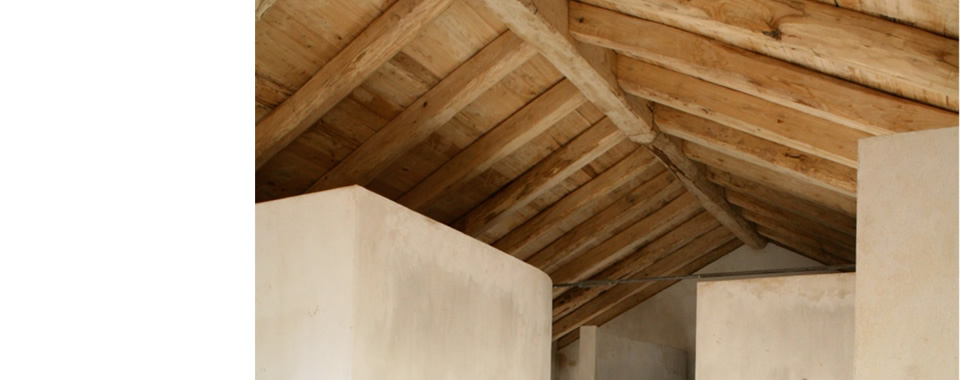

Score - Sustainable Construction in Rural and Fragile Areas for Energy efficiency
Guidelines for Integrated territorial Planning:
Microclimatic and environmental control through vegetation
The following guidelines come from a deep analysis of case studies, norms and regulations, in relation to the local level. This analysis is summarized in a card that can be downloaded in English language.
Although using vegetation to cool a space is not a new concept, many recent attempts to build energy-efficient buildings have totally ignored its significance. The primary reason for this omission is the lack of detailed quantitative data as to how effective vegetation is in reducing the energy used in heating and cooling a place. In addition, many of the recommendations for energy-conserving landscape design concepts have not been verified through actual experimentation.
There is a widespread belief in the past that plants are not friendly to built structures, ripping out the mortar and prying apart joints with their roots. The evidence suggests that only where decay has already set in then plants can indeed accelerate the process of deterioration. Certainly little evidence shows that plants will actually damage building walls. In some cases, the plants covering the wall are acting as a protective layer to the wall from the elements. Furthermore, a layer of vegetation which protects a building from solar radiation may greatly reduce the thermal tensions within the building structure.
Contrary to popular belief, walls covered with plants can also be drier. Rainfall is shed by leaves onto the ground whilst the walls remain dry. This can also help to prevent the harmful effects of acid rain since carbonic acid (formed by carbon dioxide and rainwater) is one of the substances responsible for chemical weathering of stonework buildings. Because vegetation block and filter solar radiation, inhibit wind-flow, transpire water into the atmosphere, reduce evaporation from soil, a controlled microclimate exists under a forest-like cover of plants. They stabilize temperature, keeping it lower than the surrounding air during daytime and preventing it from dropping greatly at night. The primary reason that vegetation has not been applied more widely in energy-efficient buildings is a notable lack of experimental verification of its effectiveness.
Building thermal performance can be significantly affected by the influence of vegetation on microclimate. Influence on solar irradiance is probably the most significant with substantial influences on air temperature, humidity, and airflow as well. When the weather is cool, it is important not to shade the building surfaces that can benefit from solar heating. In some cases, use of deciduous plants will allow summer shading and winter sun, in other cases careful integration of native vegetation and building can give excellent results.
- To increase awareness one must use cross communication techniques. Landscape architects must write articles in energy conservation and technical magazines in order to make engineers and technical designers go to gardening experts to seek further ideas and examples
- Interior designers’ attention must also be turned to gardening magazines for ideas and energy saving benefits
Possible criteria for MED bio–housing quality certificate
For microclimatic and environmental control through vegetation there is a detailed description in KDP 414/2009 on the methodology of calculating the energy efficiency of a building
Case studies
- Showroom GEVO – Limasso
- Ayii Anargyri Natural Healing Spa Resort
